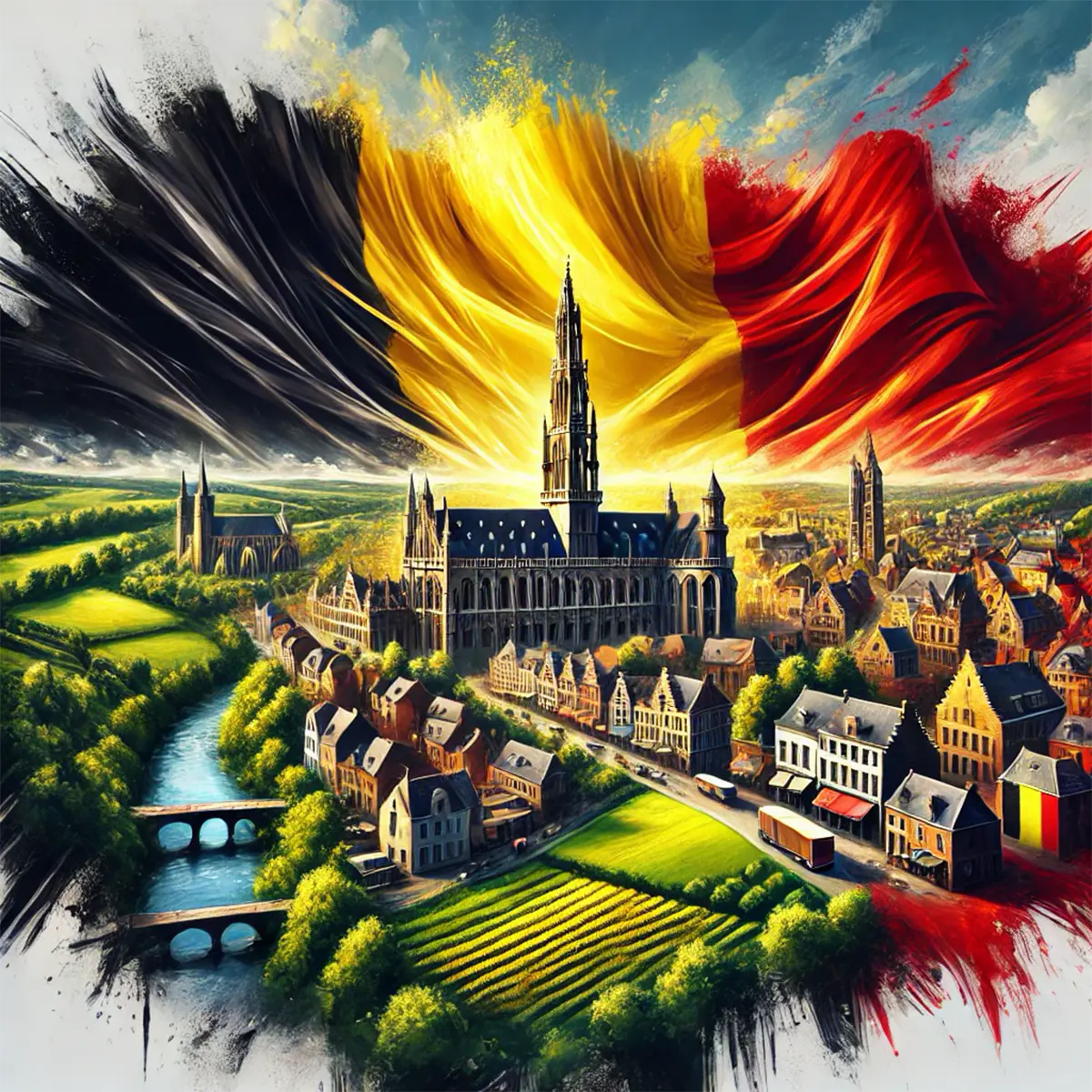The history of the Belgian flag is closely linked to the formation and independence of Belgium as a state. Its origins can be traced back to the Belgian Revolution of 1830, which brought Belgium independence from the Kingdom of the Netherlands.
In the first days of the revolution, in August 1830, a red, yellow, and black flag was raised in Brussels in the appropriate sequence. These colors were arranged horizontally, inspired by the flag of the Brabant Revolution of 1789, which had the same colors but a slightly different sequence, namely red, black, yellow. However, this style soon changed to a vertical format, similar to the French flag, but with Belgian colors.

The colors themselves are derived from the coat of arms of the Duchy of Brabant, which depicts a golden (yellow) lion on a black background, with red claws and tongue. These colors were adopted as a symbol of revolution and independence.
The modern version of the flag with black, yellow, and red vertical stripes was officially approved on January 23, 1831. Since then, despite the country's political instability and language tensions, the flag has remained unchanged.




